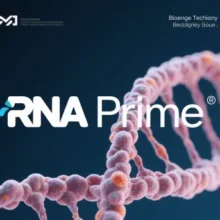
Ribozymes in Biotechnology: Core Applications and Future Prospects (2025 Update)
I. Biological Properties and Unique Advantages of Ribozymes
Ribozymes are RNA molecules capable of catalyzing biochemical reactions, challenging the traditional view that “enzymes are proteins.” Their key advantages include:
- Multifunctional Catalytic Activity: Catalyze RNA/DNA cleavage, ligation, phosphotransfer, and peptide bond formation. Engineered ribozymes can even mediate carbon-carbon bond formation and redox reactions.
- Design Flexibility: Modular design enables customizable targeting sequences for precise gene expression or metabolic pathway regulation.
- Low Immunogenicity: RNA molecules trigger weaker immune responses than protein-based enzymes, making them ideal therapeutic tools.
- Synthetic Biology Compatibility: Function as transcribed RNA without translation, simplifying genetic circuit design.
II. Core Applications and Recent Breakthroughs
1. Gene Therapy and Precision Medicine
- Targeted Gene Silencing:
- Antiviral Therapy: Hammerhead ribozymes cleave HIV-1 GAG RNA, HBV pgRNA, and HCV IRES RNA to suppress viral replication. Angiozyme (targeting VEGFR-1) has completed clinical trials for renal and breast cancers.
- Cancer Intervention: Ribozymes targeting HPV E6/E7 oncogenes inhibit cervical cancer cell proliferation; those targeting BCR-ABL fusion genes treat chronic myeloid leukemia.
- Gene Editing Enhancement:
- CRISPR Precision: Ribozymes stabilize gRNAs, reducing CRISPR off-target effects.
- Self-Cleaving Delivery Systems: AAV vectors with ribozymes release therapeutic genes in specific tissues via self-cleavage, improving targeting.
2. Synthetic Biology and Metabolic Engineering
- Artificial Biosystems:
- Modular Genetic Circuits: Ribozyme-based logic gates (e.g., AND/OR) regulate microbial metabolism. For example, E. coli engineered with ribozyme-controlled pathways produce taxadiene (a paclitaxel precursor) at 1 g/L.
- Dynamic Regulation: Ribozymes respond to small molecules (e.g., theophylline) to activate or repress gene expression in real time.
- Environmental and Industrial Applications:
- Heavy Metal Remediation: Engineered ribozymes bind cadmium and lead ions for soil decontamination.
- Biofuel Production: Ribozymes in cyanobacteria enhance lipid synthesis, boosting biodiesel conversion efficiency by 40%.
3. Molecular Diagnostics and Biosensing
- Ultra-Sensitive Detection:
- Viral RNA Detection: Cas13 ribozymes combined with lateral flow assays detect African swine fever virus in 15 minutes (1 copy/μL sensitivity).
- Cancer Biomarker Screening: Ribozyme-aptamer complexes identify methylated ctDNA sites for early lung and colorectal cancer diagnosis.
- Dynamic Biosensors:
- Environmental Monitoring: Ribozymes trigger fluorescent signals in response to pesticides or heavy metals for real-time water quality analysis.
4. Agriculture and Ecological Management
- Stress-Resistant Crops:
- Low-Cadmium Rice: CRISPR-edited OsNramp5 rice, combined with ribozyme self-cleaving vectors, is cultivated on millions of acres in China’s contaminated regions.
- Enhanced Photosynthesis: Introducing maize PEPC into rice increases Rubisco activity by 30%, boosting yields by 15%.
- Ecosystem Security:
- Gene Drive Technology: CRISPR-based daisy-chain systems spread malaria-resistant FBN9 genes in mosquitoes, blocking 99% of transmission in field trials.
- Pest Control: Ribozymes targeting juvenile hormone synthesis genes enable precise insect population regulation.
III. Challenges and Innovative Directions
1. Delivery and Stability Challenges
- In Vivo Delivery: Serum RNase degradation requires LNP or exosome encapsulation with nuclear localization signal (NLS) optimization to achieve >80% transfection efficiency.
- Longevity Strategies: Chemical modifications (e.g., 2′-fluoro, phosphorothioate) or circular RNA designs extend ribozyme half-life to 72 hours.
2. AI and Quantum Computing Integration
- AI-Driven Design: AlphaFold 3 predicts ribozyme-substrate structures, while generative models (e.g., DNA-GPT) optimize catalytic activity, slashing design time from months to days.
- Quantum Molecular Docking: D-Wave quantum annealers accelerate ribozyme-drug binding simulations, improving virtual screening efficiency 100-fold.
3. Synthetic Biology Frontiers
- Hybrid Ribozyme Machines: Fuse ribozymes with proteins to combine RNA catalytic flexibility with protein stability, enabling reactions like asymmetric synthesis.
- Dynamic Ecosystems: Ribozyme-regulated “carbon-negative” agriculture systems use C4/CAM hybrid crops to enhance carbon sequestration tenfold.
IV. Decadal Outlook
- Medical Revolution: Ribozymes will shift gene therapy from disease repair to “prevention-enhancement,” extending healthspan beyond 100 years.
- Industry 4.0: AI-powered ribozyme factories will enable yottabyte-scale DNA storage and biomolecular computing, replacing 30% of traditional chemical processes.
- Ecological Security: Global tracking databases (e.g., GOSHIBA) and triple biocontainment technologies will balance gene drive benefits with ecological risks.
Ribozyme breakthroughs will redefine the boundaries of life sciences, but sustainable progress requires interdisciplinary collaboration and ethical alignment.
Data sourced from public references. Contact: chuanchuan810@gmail.com.





